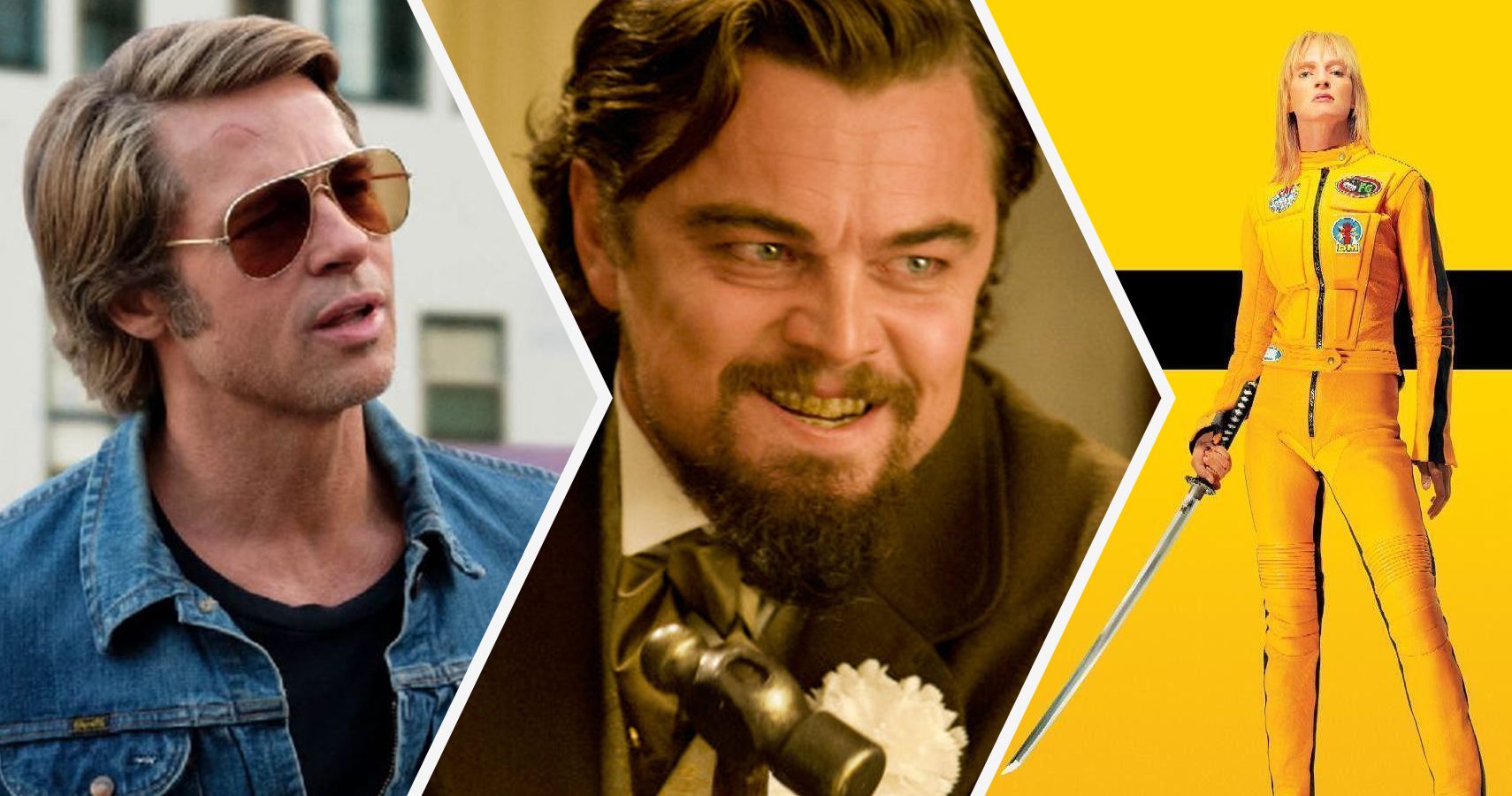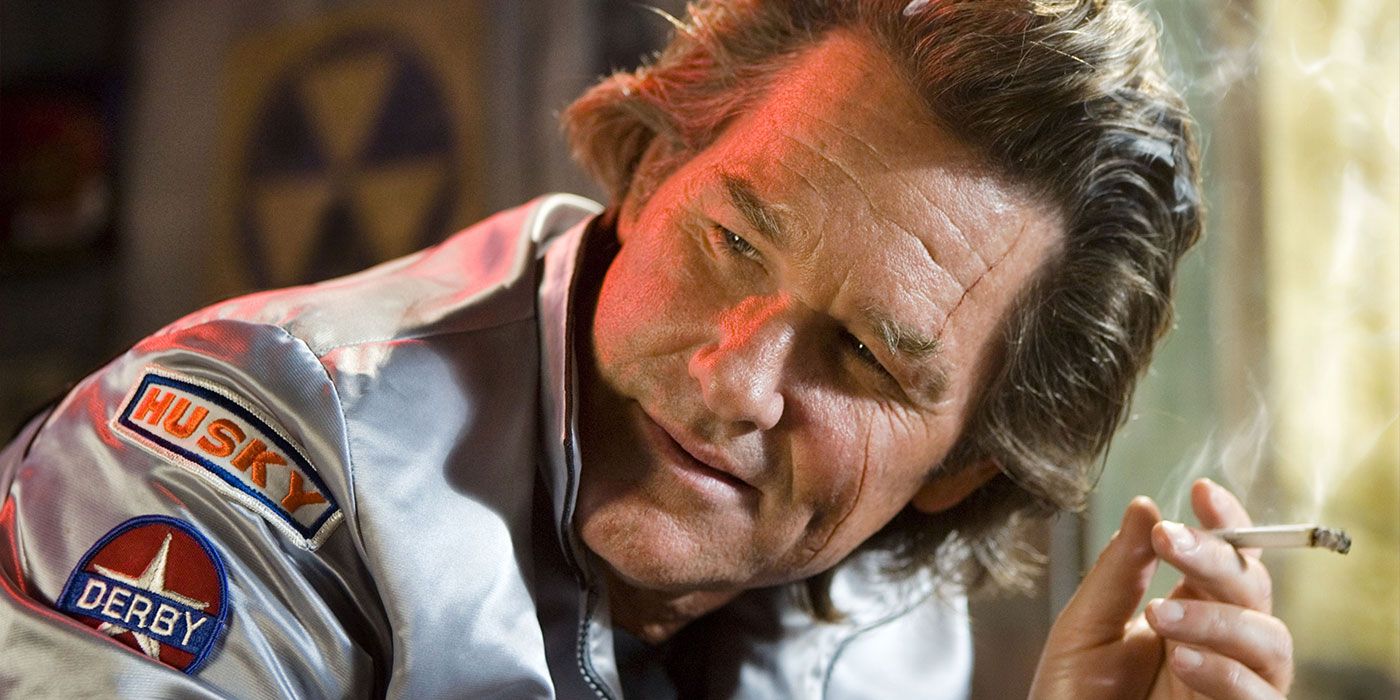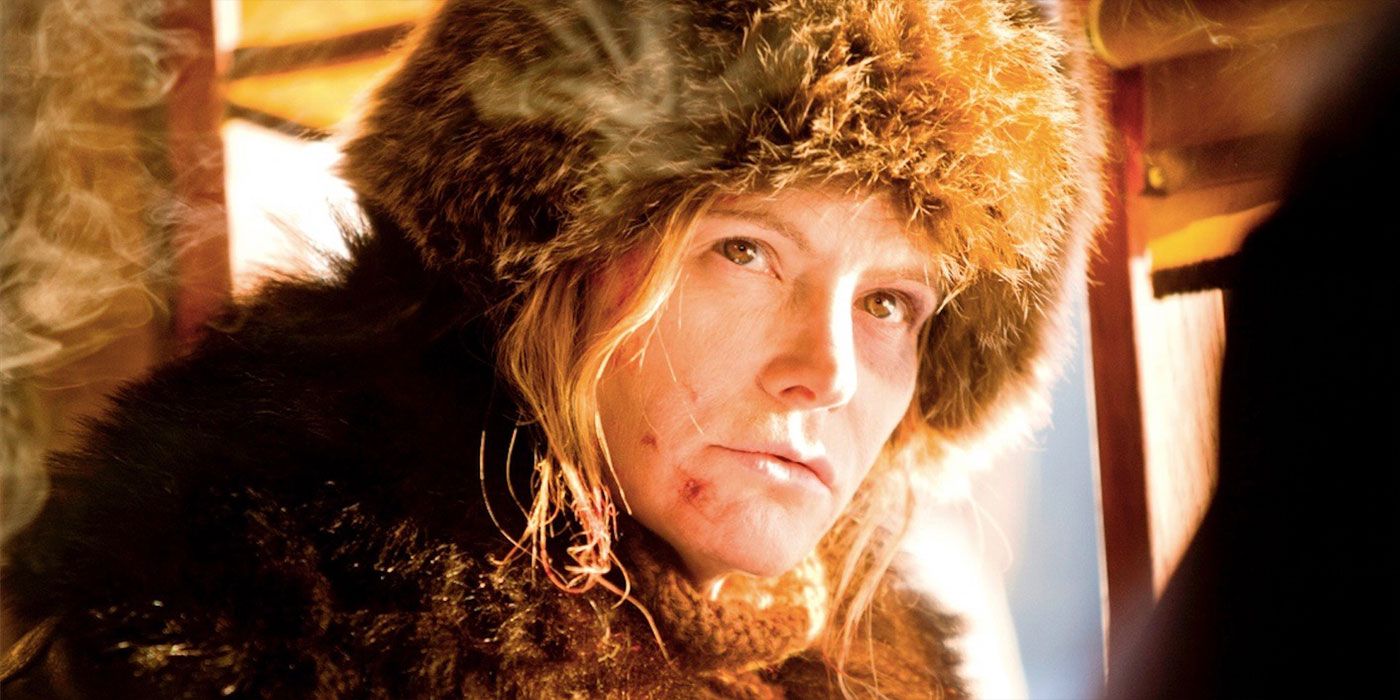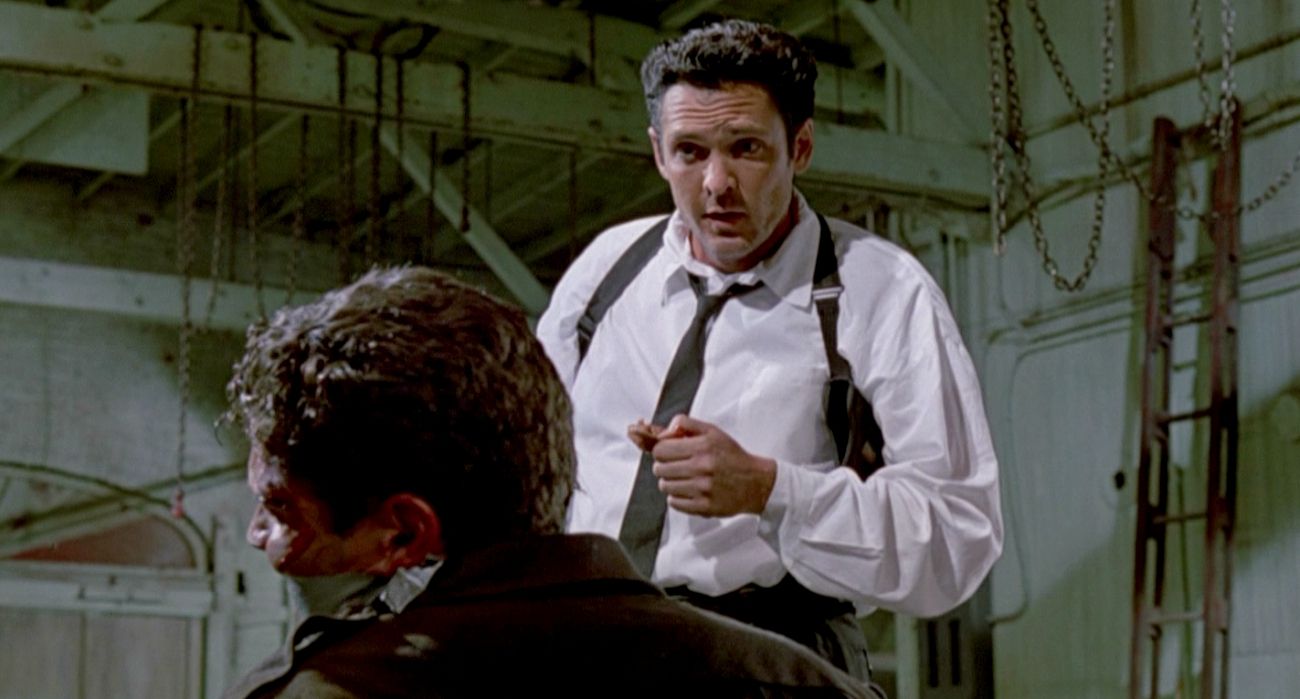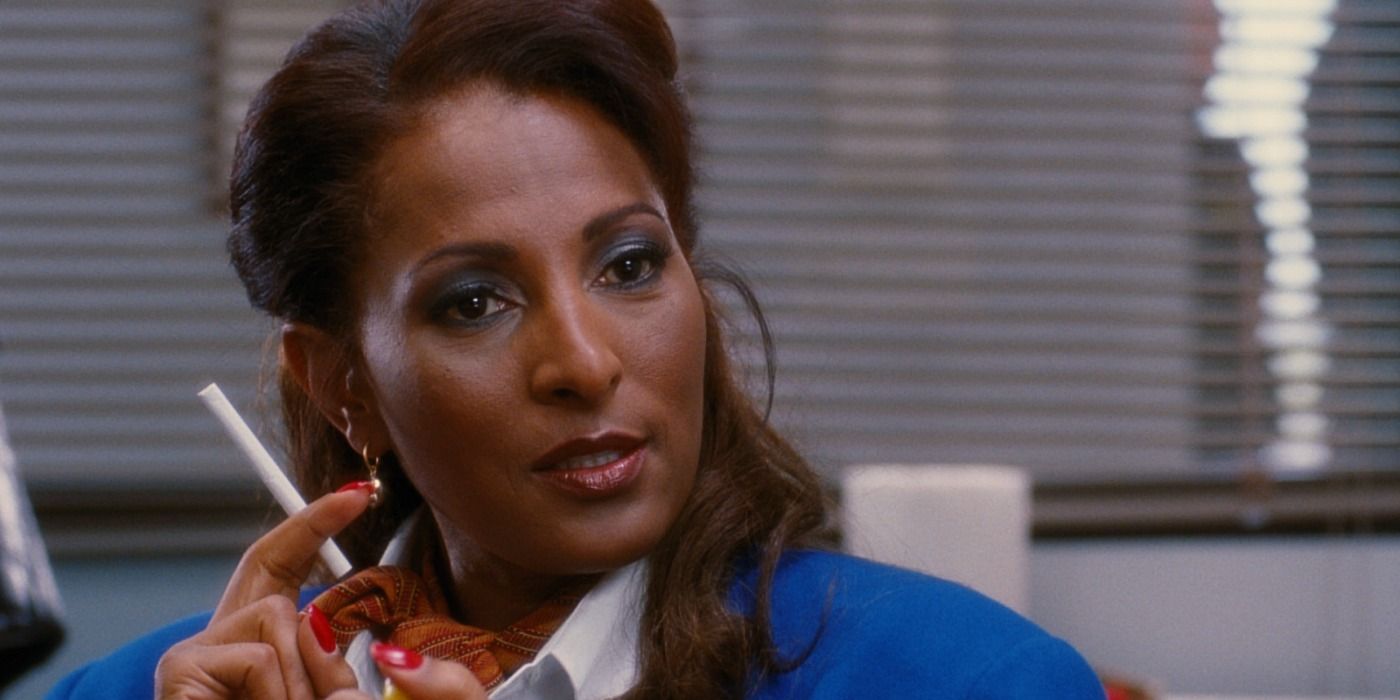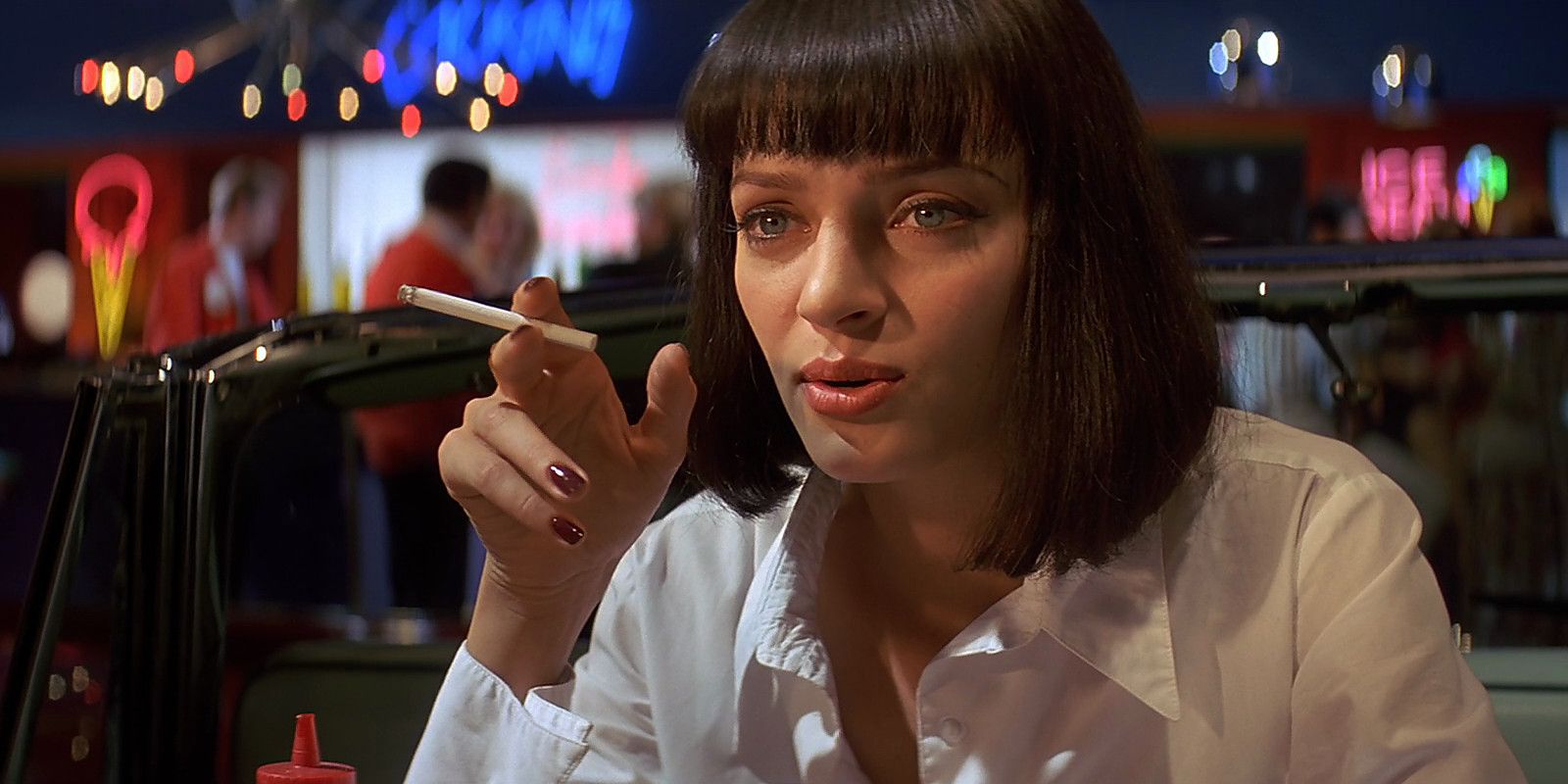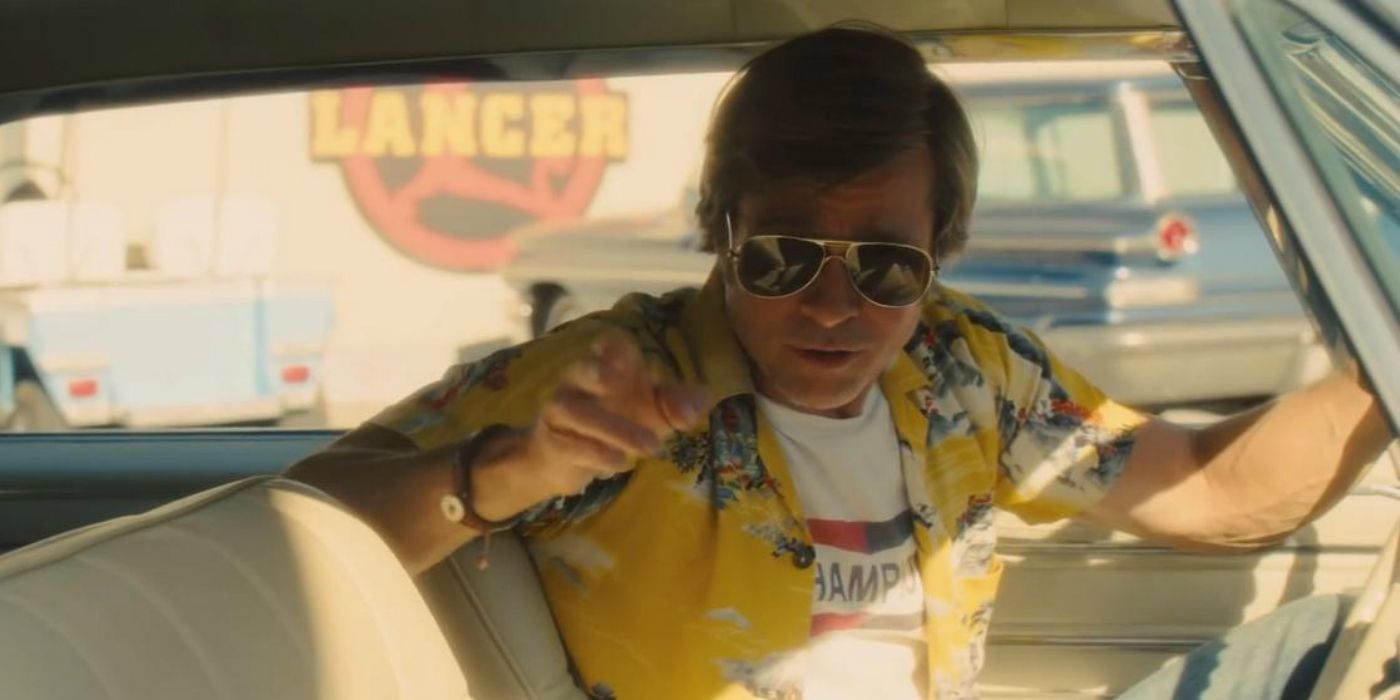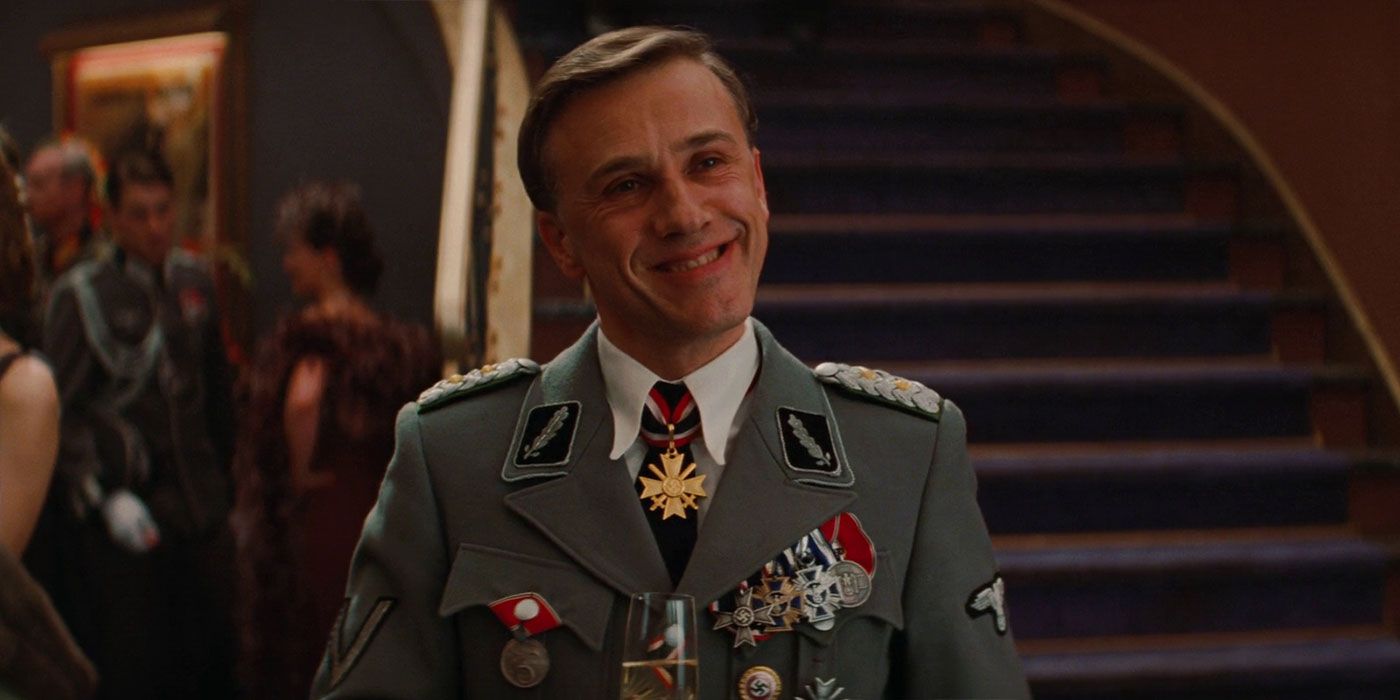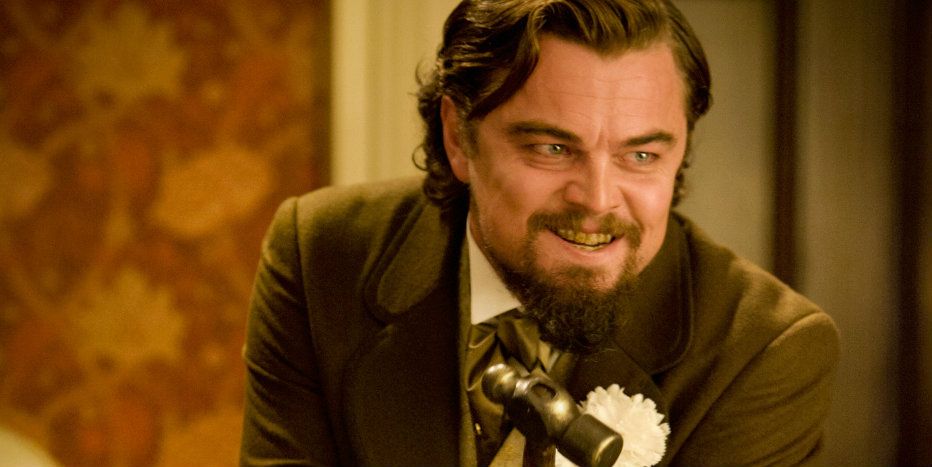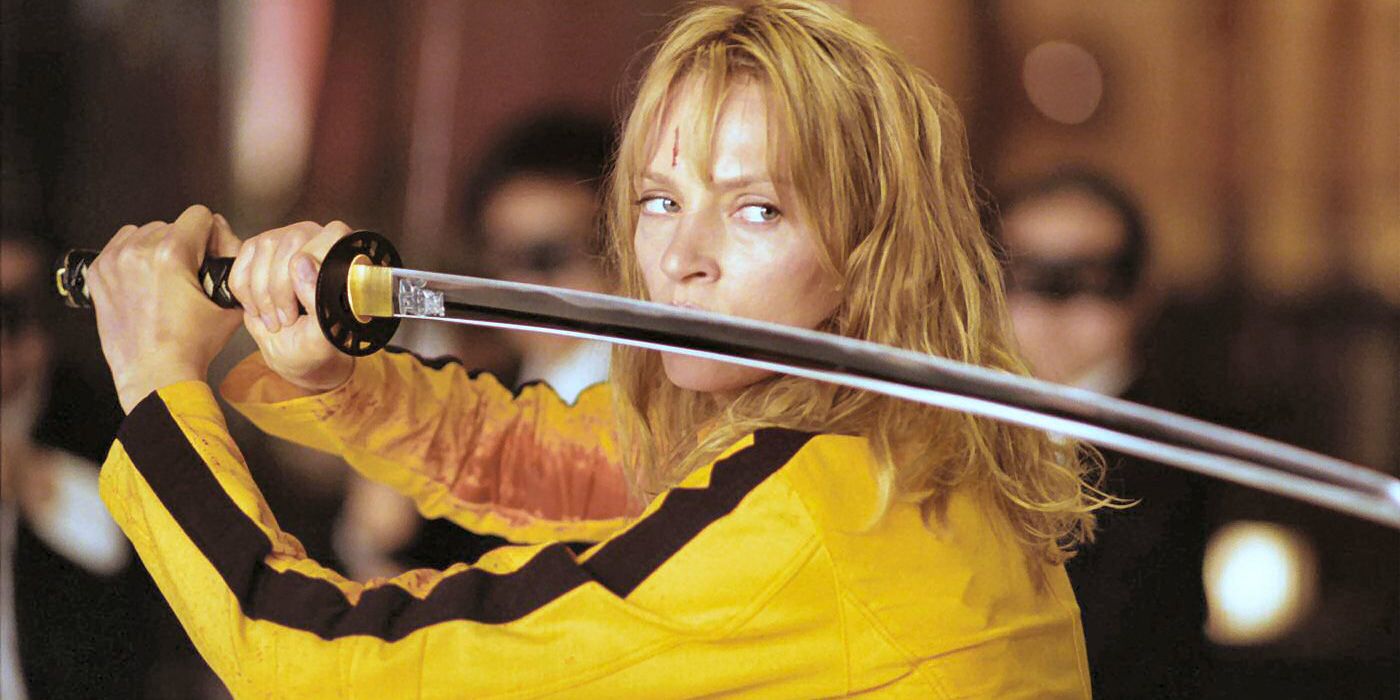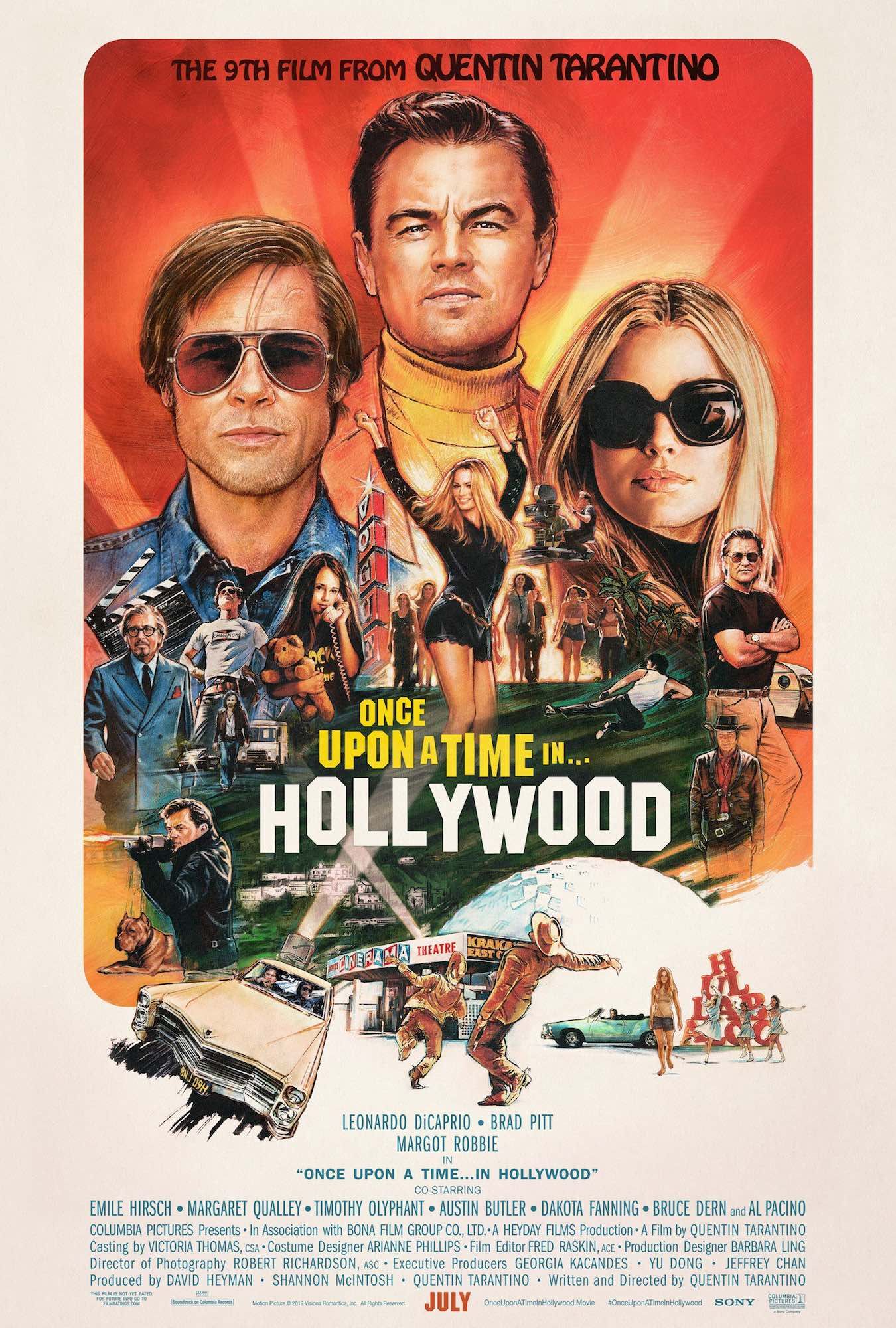If they’re lucky, writer-directors are responsible for bringing one iconic character to life in their whole career. A real legend will have a couple to their name, like George Lucas or Martin Scorsese. However, Quentin Tarantino takes the gold as he has at least one iconic character in every single one of his movies.
This is down to his meticulous attention to detail, as well as the fact that when he writes dialogue, he doesn’t try to tell his characters what to say – he lets them speak to him. That might make him sound crazy, but it clearly works. So, here is The Best Character In Each Quentin Tarantino Movie, Ranked.
Updated January 17th, 2020: Last summer, Quentin Tarantino added a couple of new iconic characters to his oeuvre with his latest movie, Once Upon a Time in Hollywood. The roles of Rick Dalton, a TV tough guy who’s an insecure wreck in real life, and Cliff Booth, his stunt double who spends his days getting into real danger, have earned Oscar nominations for Leonardo DiCaprio and Brad Pitt, respectively, in their first on-screen pairing. We’ve updated this list with the best character from Once Upon a Time in Hollywood.
Death Proof: Stuntman Mike
Death Proof is easily Tarantino's weakest film, and the director himself is the first to admit it. In fact, probably the best thing about the movie is its premise: a stuntman with a "death-proof" car goes around killing girls by crashing into their cars. It expertly weaves together the car genre and the slasher genre. If only the execution had been a little better.
Tarantino cast Kurt Russell as Stuntman Mike because he was sick of seeing him in movies like Dreamer and Miracle. This is Snake Plissken – in the '70s and '80s, he was a badass! Tarantino recaptured some of that badassdom and, frankly, it was the only thing that made the movie watchable.
The Hateful Eight: Daisy Domergue
The Hateful Eight is often criticized for its portrayal of violence against women. In most scenes, there's a moment in which Kurt Russell's bounty hunter character John Ruth punches Jennifer Jason Leigh's Daisy Domergue, either breaking her nose or giving her a black eye or whatever, and it's always played for pitch-black laughs. But to be fair, Daisy is a murderer.
To Tarantino, she shouldn't get special treatment just because she's a woman – she's a killer and should be treated as such. Tarantino himself described Daisy Domergue as the "Susan Atkins of the Wild West." She's bad news. Plus, Leigh played the role brilliantly, drawing out the most intriguing (and possibly most hateful) character of the titular bunch and earning the only Oscar nomination out of a stellar ensemble cast.
Reservoir Dogs: Mr. Blonde
Mr. Blonde may be a total psychopath who's obsessed with inflicting violence upon people, but Michael Madsen's smirk makes him a charming one. There are a lot of interesting characters in Reservoir Dogs, but none of them are more interesting than Mr. Blonde. He's responsible for one of the most iconic moments in the history of cinema with the classic "Stuck in the Middle with You" torture scene.
Madsen's gleeful portrayal of Mr. Blonde in the scene ties into the juxtaposition of a breezy pop song playing over a gut-wrenchingly bloody scene. What makes the character even greater is the revelation in Pulp Fiction that he has a brother in the Tarantino-verse. Mr. Blonde was the first piece in the puzzle that all of QT's films took place in the same universe.
Jackie Brown: Jackie Brown
In the case of Jackie Brown, Tarantino's blaxploitation-inspired adaptation of Elmore Leonard's pulpy crime novel Rum Punch (which is so far the only time Tarantino has adapted a screenplay from previous source material), the best character is actually the one whose name is in the title.
It introduced a new generation of moviegoers to the great Pam Grier and she perfectly carried Jackie's emotions – always very cool and collected, never hysterical – in every scene. Also, as a legend of blaxploitation cinema, she helped to sell the obscure angle that Tarantino was going for. It’s just a shame that the movie itself is one of the director’s most underrated gems.
Pulp Fiction: Mia Wallace
Pulp Fiction might be the Tarantino movie with the highest percentage of great characters – Jules, Vincent, Butch, Marsellus – but it's arguably Uma Thurman's Mia Wallace that takes the crown of the movie's greatest character. Thurman (and also Tarantino in the writing of Mia) throws all the clichés of the mob wife character out the window so she can have an honest conversation with Vincent over some milkshakes and cocaine.
She's filled with endless wisdom and anecdotes. Mia is also present for the most iconic scenes: Jack Rabbit Slim's, the dance contest, the overdose. But what really makes her the best character is simply that she epitomizes the tone of the film. She's crammed into a trite pulpy crime story we've seen a thousand times before, and yet she puts a modern spin on her part in it, thus selling the whole unusual movie. There's a reason she's the one on all the posters.
Once Upon a Time in Hollywood: Cliff Booth
Cliff Booth may be Brad Pitt’s greatest role to date. The character wasn’t written specifically for him – in fact, Tarantino was reluctant to cast Pitt, as he felt that the actor was too handsome to convincingly play a stuntman – but in retrospect, it’s the role he was born to play. Cliff represents the harsh reality of Hollywood. He’s out of work, he’s living in a trailer outside of Hollywood, and he’s accepted the cards that he’s been dealt by the film industry.
Cliff is a great friend to Rick Dalton, his effortless charm glosses over his violent and somewhat predatory tendencies, and as shown by his final moments in the film, he’s a carefree, spiritual guy who lets the universe guide him through life.
Inglourious Basterds: Col. Hans Landa
Quentin Tarantino had created some truly sinister characters before Hans Landa, but since Inglourious Basterds was his first ever historical movie that brought in bad guys from real life, Landa does hit closest to home. He’s not just a sadist – he’s a Nazi sadist. As far as he’s concerned, he’s the good guy, and that’s what makes him so unnerving. Christoph Waltz plays this perfectly, leaning into the character’s prejudices and bloodlust.
He rejects the nickname “the Jew Hunter,” and yet he spends his days tracking down Jewish refugees. He’s in denial that he’s a bad guy, but he is a really bad guy. No wonder Waltz won a much-deserved Oscar for the role.
Django Unchained: Calvin Candie
This is the role that should’ve won Leonardo DiCaprio his first Oscar. The role of Calvin Candie wouldn’t work without a frightening presence, and Leo has that in spades. He plays Calvin’s campiness and theatrical flair so well and then switches to the menacing slaver role at the drop of a dime.
When he loses it, the atmosphere of the whole scene suddenly becomes tense. We’ve all heard the story about how during the skull-hammering scene, Leo actually cut his hand and started bleeding and then he continued performing the scene regardless and it ended up in the final cut – that’s commitment.
Kill Bill: The Bride
There’s a rule in screenwriting that you have to create a character you love and then put them through sheer hell for two hours. Well, that’s exactly what Quentin Tarantino did with the Bride in Kill Bill. The hell she goes through could not be confined to one single movie – it was split into two.
The creation of the character herself is credited to Tarantino and Uma Thurman as a joint effort. Even Tarantino has commented that he feels a closer connection to the Bride than any of his other characters, and that’s why he gave her a happy ending after Vol. 2: “I love the Bride...I killed myself to put her in a good place at the end of this long journey.” By the end of the grueling two-part epic, we’re all rooting for her. We want things to work out for her, and we’re glad they do.

